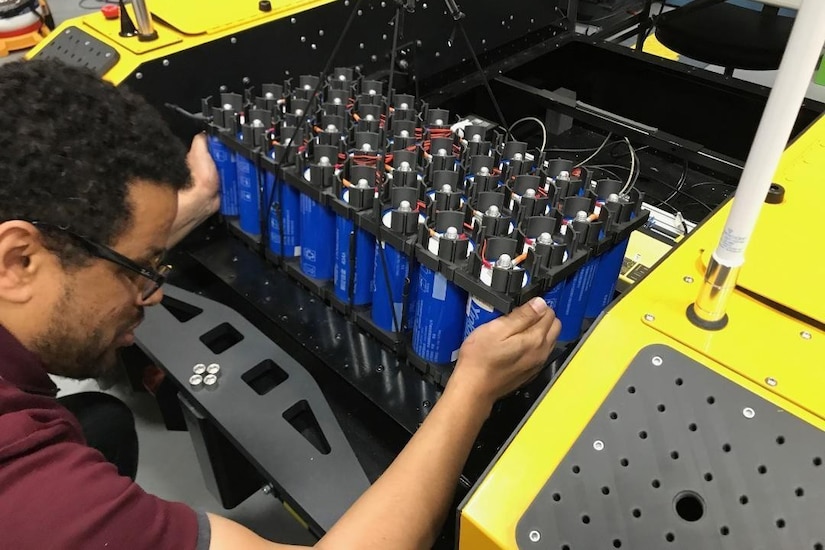May 24, 2021 | , DOD News
Kathleen H. Hicks provided keynote remarks at the ARPA-E Energy Innovation Summit, an annual conference and technology showcase of the Department of Energy's Advanced Research Projects Agency-Energy today.
Climate change has exacerbated natural disasters such as hurricanes, drought and flooding both at home and abroad, she said.

Overseas, the U.S. military has taken an increasing number of humanitarian assistance mission, she said, adding that climate change will result in an increase in civil wars and terrorism.
At home, hurricanes have devastated installations in the Southeast and out west, service members have been called to assist with wildfire suppression efforts, she said.
"Climate change is also driving new areas of geopolitical competition, such as in the Arctic. We are being asked to meet this expanded mission set even while climate change impedes our training and readiness. Climate-induced extreme weather is already a major drain on our budget. Every dollar that we spend addressing the effects of climate change is a dollar that we are not putting toward other priorities, like meeting the challenge posed by China and modernizing our forces," Hicks said.
To ensure that the department remains in a position to defend the nation and combat the effects of climate change, DOD is undertaking a number of actions, she said.
For example, the department is fostering a culture of climate-informed decision making, she said. This means that climate considerations must become an integral element in resource allocation and operational decision making processes.
The department will need to incorporate climate change into threat assessments and update modeling and simulations to reflect climate change, she said. Also, warfighting concepts, regional and country engagement plans and logistics planning also need to be updated.
"We will continue to train, test and equip a climate-ready force. This will mean ensuring that our forces are prepared to operate in extreme and often variable climate environments. We must ensure that our service members have the ability to train safely in extreme conditions. Additionally, we have to make sure our weapons systems and other equipment can operate in extreme conditions," Hicks said.

The department is also looking for ways to reduce the energy needed to complete the missions overseas, she said.
"Doing that will require some hard thinking about what the future force should look like. We are preparing for autonomy, hybridization and electrification and new materials to improve efficiencies and enhanced capability," she said.
Defending the nation also means having a supply chain that can support military requirements, she said. For example, the U.S. is lagging competitors, including Beijing, in attracting investment in technologies such as lithium ion batteries.
A top DOD priority is taking care of its people, Hicks said. That means building infrastructure such as buildings people work and live in on installations that are constructed to be resilient to severe weather.
It also means energy resiliency that is less reliant on the commercial grid, she said, noting that micro-grids can power installations with energy storage and distributed generation with non-fossil fuel systems like solar.
Aside from the U.S. Postal Service, DOD has the largest vehicle fleet in the federal government, with 170,000 non-tactical vehicles.
"As global transportation continues to electrify, the department must meet the moment or risk being left with an expensive and inefficient fleet. Therefore, DOD must begin investing in both electric vehicles and smart charging infrastructure to support the fleet," she said.
Another priority is working with interagency organizations like the Department of Energy, as allies and partners for such things as energy technology development, she said.







No comments:
Post a Comment